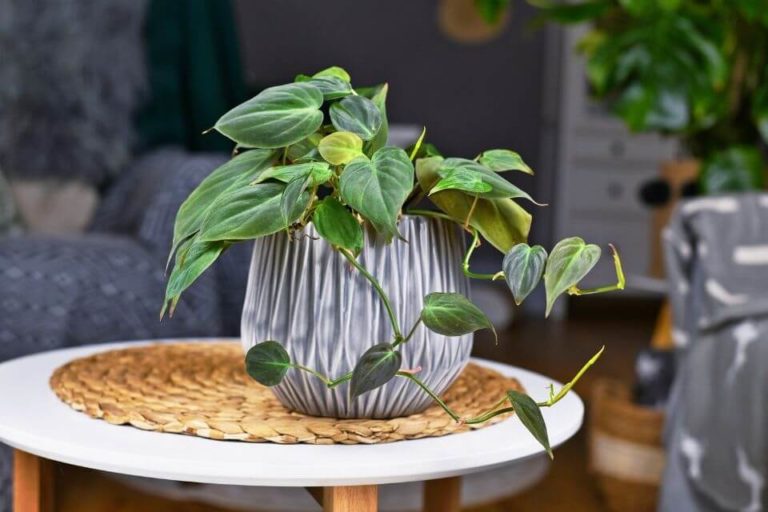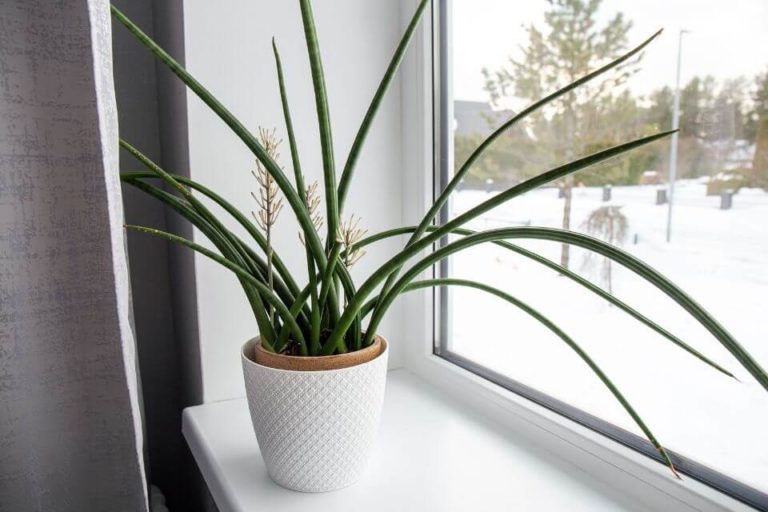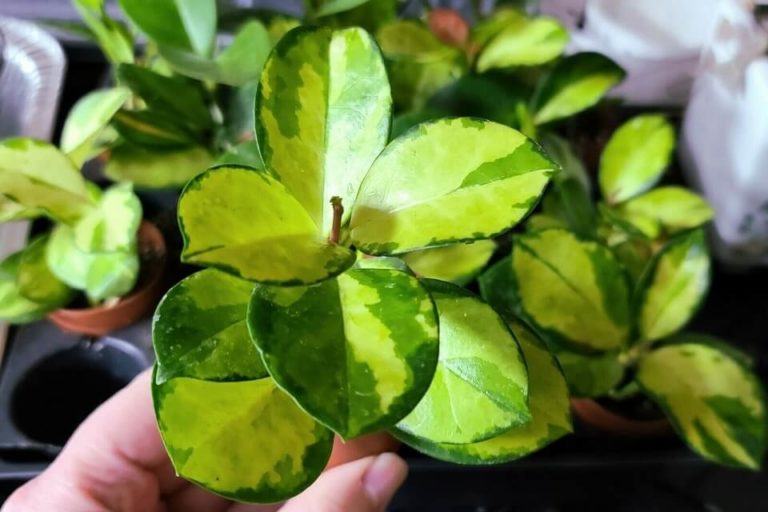Ficus Tineke Plant Care: How to Propagate, Grow and Care
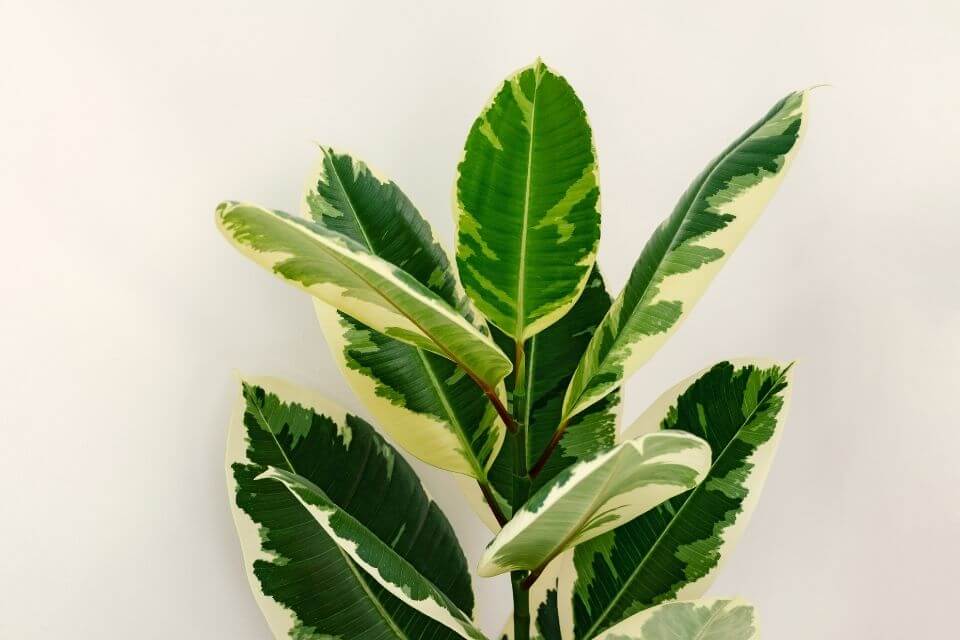
If you are a nature enthusiast then you might have heard about the Ficus Tineke plant. This plant features unique and gorgeous leaves that planting in a pot in your house will help in enhancing and complementing its décor.
Ficus Tineke is a houseplant with amazing benefits if you have it in your home. Caring for this rubber plant is quite easy and therefore making it beginner-friendly.
In this platform, we have provided you with detailed information regarding the origin of the Ficus Tineke plant, its size, and appearance, how you can maintain and care for it plus many more. Read through to find out more.
TABLE OF CONTENTS
Ficus Tineke Plant Overview
Ficus Tineke is typically grown as a houseplant. However, with appropriate care and knowledge, this beautiful plant can thrive in both indoor and outdoor conditions.
The scientific name for this plant is Ficus Elastica Tineke and it is a relatively new hybrid of the Ficus Elastica plant. The Ficus Tineke plant features beautifully variegated leaves.
This beautiful Ficus Elastica Tineke houseplant features deep green leaves and around the edges of its leaves is dappled with a pretty shade of cream. Additionally, the stem and veins of the Ficus Tineke plant vary in color.
The color variation is from a light soft pink to a deep dramatic burgundy. Because of this plant’s unique color variation, it is great to have it in your house since it will help in making look more beautiful.
Apart from being ornamental, the Ficus Tineke plant will help in purifying the air around your house hence making your house a healthy indoor environment.
Caring for this plant is quite easy and therefore making it a beginner-friendly plant. Despite caring for Ficus Elastica Tineke plant being a beginner-friendly plant and easy to care for, it is deadly to both humans and pets.
Therefore, you should take great caution before bringing it to your home. Ficus Tineka is sometimes called Indian Rubber Fig, Rubber Tree, or variegated rubber tree or plant and it belongs to the Moraceae family.
Further, just like other Ficus plants, Ficus Tineke is believed to have originated in Southeast Asia, particularly around India, Indonesia, China, Burma, Malaysia, Bhutan, and Nepal.
Currently, you can find Ficus Tineke in various parts of Sri Lanka, the West Indies, Australia, and the United States.
In your house, Ficus Tineke can thrive in various places such as stairs, corners with bright indirect sunlight, or even under a window that has a perfect balance of shade and sun.
Size & Appearance
The size at which Ficus Tineke can grow differs. When fully grown, the Ficus Elastica Tineke plant can be around ten feet when kept indoors.
However, the growing pattern of this ornamental tree is quite different outdoors since it can grow up to a height of 50 feet. In a year, this beautiful plant can grow up to 24 inches or 60 centimeters.
There are various things that may affect how this plant grows and looks in your home. The factors include location, environment, the size of the pot, potting soil, airflow, and the direction that it faces. With proper care, Ficus Tineke may grow rapidly.
When it comes to appearance, Ficus Tineke is a big plant and its leaves are gorgeous. On rare occasions will you find this plant blooming when kept indoors.
When it does, it blooms white. Its leaf size can be up to 13 inches (33 centimeters) in length and up to 5 inches (12.5 centimeters) in width. The Ficus Tineke plant has large, thick, and watery leaves.
Further, the plant also has a tricolor of variegated patterns. the variegated patterns are in shades of cream white, gray-green, or green, often tinged maroon or burgundy.
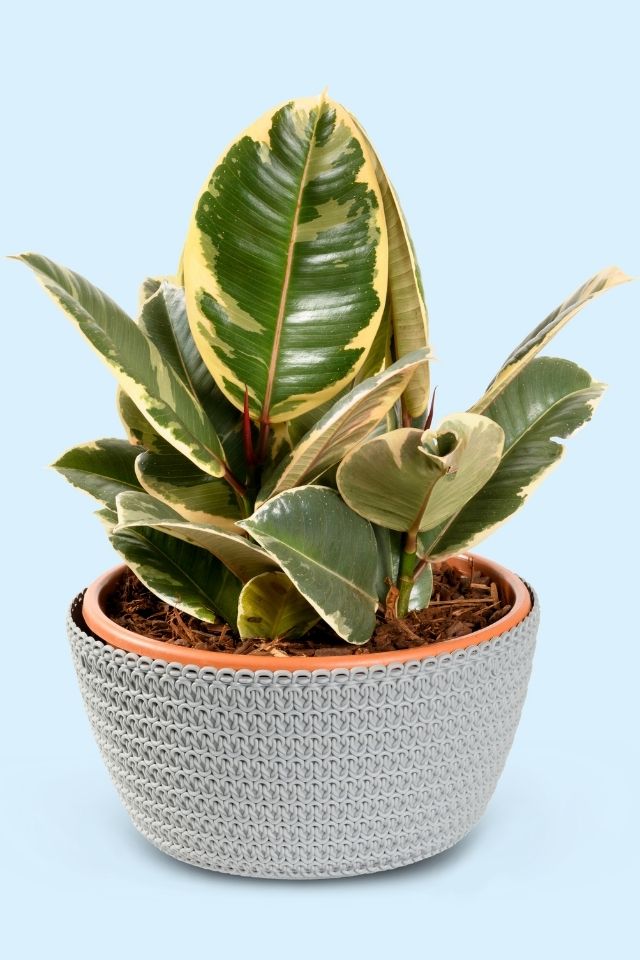
When in bright light, the coloration of the foliage is very intense and beautiful. When the leaves of Ficus Tineke are new, the flush of burgundy or maroon is often more pronounced.
This may fade away as Ficus Tineke natures. However, this does not affect this plant’s beauty.
Ficus Tineke Plant Uses and Placement
The Ficus Tineke plant is very gorgeous. Because of its unique appearance, this plant will help in enhancing the décor of your home. This ornamental plant also helps in purification purposes.
It will help in purifying the air in your house hence making your room a healthier indoor environment. Ficus Elastica Tineke plant life in their natural habitat is mainly under the tree canopy.
The canopy trees filter all the harsh rays of the tropical sun. Therefore, in your home, you will need to place them in places without direct sunlight.
Direct exposure of this plant to the full sun may lead to the variegation fading or its leaves getting damaged. You should place it in an east or north window in your house.
You can also place this plant a few feet away from the window in a south or west-facing room in your home. This plant can also thrive when you place it around stairs, and corners in your home with indirect sunlight, or even under any window with a perfect balance of sun and shade.
Ficus Elastica Tineke Care & Maintenance
– Choosing Best Soil and Pot Size
Soil and the pot size are quite essential for the thriving of the Ficus Tineke plant. The best soil for this beautiful plant to thrive should be light and well-draining.
Additionally, the soil should be able to drain properly but also retain some moisture. A mixture of well-draining potting soil is best. Further, you can also use a compost mix containing small amounts of soil that are well-draining.
This plant will get all the nutrients it needs and also allow the soil to drain properly if you use a well-draining compost mix containing small amounts of soil.
Besides, the Ficus Elastica Tineke plant can also thrive in heavy clay, sandy soil, and loamy soil. However, you should not allow the plant to be in soggy soil for extended periods.
This is because, with poor drainage soil and if it sits on soggy soil for long periods of time, the overall health of your Ficus Tineke plant may be affected.
For example, if the soil holds onto the water for longer periods of time, it can become packed tight and absorbent leading to the root of your Ficus Tineke plant rotting.
Therefore, the pot should always have drainage holes. The best soil for your Ficus Tineke plant to thrive should also be slightly acidic and alkaline.
You can be able to get this soil growing medium by mixing one part of peat moss, one part Pine bark, and one part perlite. The soil pH should be between 6.0 to 6.5.
You should choose a pot with at least one drainage hole to allow excess water to flow out of the container rather than pool near the roots of the plant. This is because the Ficus Tineka plant is very susceptible to root rot.
Your Ficus Tineke’s overall size will depend on the size of the pot you select. Choose a pot with wider and deeper dimensions if you want a bigger plant because they will allow the roots to spread.
In the majority of cases, you should pot your Ficus Tineke plants into a larger container every two to three years. This promotes organic growth and aids in the plant’s ascent to greater heights.
– Watering Tineke Rubber Plant
Watering the Tineke Rubber plant does not require a high maintenance schedule. The watering schedule for this plant should be on weekly basis. However, it is advisable that you water the plant when the top half layer of the soil feels dry.
You can monitor the moisture level of the top half of the soil in the pot by poking using your finger. Should you feel it is wet then it is advisable that you let it dry out further.
Overwatering the Ficus Tineke plant may lead to its root rotting or fungal issues. The best water for watering this plant is either rainwater or distilled water.
However, you should let tap water sit overnight to reach room temperature and dissipate any chemical content such as fluoride if it is a must to use tap water.
Furthermore, watering should also depend on the humidity in your home. During the growing season, you should water your Tineke Rubber plant once every one to two weeks.
During summer, you should let the soil dry out slightly between waterings if you want to keep it moist. This is because the warm summer temperature can cause moisture to evaporate quickly from the soil.
During winter, the growing phase of the Ficus Tineke plant is not very active and therefore you should reduce your watering frequency.
– Ficus Tineke Light Requirements and Exposure
The Ficus Tineke plant will thrive in a location with plenty of bright light. It can tolerate some dappled to full sun on its leaves for a few hours each day, but you should move your plant to a more protected location if you notice burnt patches or withered, wilting leaves.
Because there is less of the green pigment chlorophyll available for photosynthesis in variegated cultivars than in their non-variegated counterparts, they will require even more light.
The natural light in your house can be enough to meet the light needs of this plant. Further, when Ficus Tineke plant is very unique. This is because when it gets too little light, its leaves may drop and too much light also affects it.
Just make sure to keep Ficus Elastica Tineke plants out of direct sunlight if you wish to grow them outside. The leaves may scorch in an unpleasant way if there is too much sunlight.
It is advisable that you dust the leaves of the Tineke Rubber plant carefully with a soft, lightly dampened piece of cloth if you want it to fully benefit from light.
– Required Temperature
The required temperature range for the Ficus Tineke plant to thrive well should be between 60°F and 80°F (15°C and 27°C). the temperature range is quite broad therefore not too hard to achieve.
Additionally, you should keep sources of heat such as the radiator and any air vents, drafty areas, or air-con units in your home away from the plant.
Any temperature between 50°F to 86°F (10°C and 30°C) is bearable for the Ficus Tineke plant to thrive. However, you should watch for sudden temperature changes.
A sudden increase or drop causes your plant to suffer from stress and then change color. This will lead to your plant losing the cream shade in the leaf, turning yellow and the leaves starting to fall out.
– Humidity Requirements
Ficus Tineke plants are accustomed to high humidity levels in the wild. Therefore, the range of 50% to 75% is the ideal humidity for Tineke Rubber Tree.
That is not a healthy environment for people or buildings, but it can be adjusted to meet the humidity needs of the Tineke Rubber plant. At a humidity level of 40%, your Ficus Tineke should be content, but anything lower will result in crispy edges on the leaves.
Even though daily misting with distilled water can be effective, as your Ficus Tineke gets bigger, it can become a laborious task. Water in a pebble tray will moisten the air a little.
The best option for increasing the humidity levels in your room to suit the Ficus Tineke plant is by use of a humidifier
– Using Fertilizer
The use of fertilizer on this plant depends on the season. During spring and summer when the Ficus Tineke plant thrives and it will need more fertilizer.
Applying a standard water-soluble houseplant fertilizer once a month during spring and summer will be great. Before applying the fertilizer to this plant, you should dilute it to half-strength.
A strong fertilizer can lead to straggly growth of your plant. You do not need to use fertilizer during winter since there is not much growth taking place.
– Pruning Ficus Tineke Plant
Instead of becoming a tall, slender tree, Ficus Tineke pruning can produce a broader, bushier shape. Cut the stem just above a node, and new leaves will start to emerge right away.
If you do not like the appearance of any emerging aerial roots, you can also cut them off. It is best to perform any pruning in the spring and summer when the plant is actively growing.
Avoid coming into contact with the milky sap when cutting the Tineke Rubber Tree since it has latex in it, which can result in a rash. Wear gloves, and rinse your skin as soon as you can if any gets on it.
– Repotting
You should do repotting of the Ficus Tineke plant after every two years. However, you should keep an eye on a few key indicators that its repotting time has arrived instead of sticking to a strict schedule.
Tineke Rubber plant is ready for repotting if it has gotten root-bound when the soil appears to vanish in a mass of roots or when roots are protruding from the bottom of the pot.
Only go up one pot size, or around an inch or two in diameter, when selecting a new pot. Your Ficus Tineke’s growth will be slowed down by a new pot that is too big. Make sure the drainage is adequate.
Use only brand-new potting soil each time you are repotting.
– Cleaning the Leaves
You can clean the leaves of your Ficus Tineke plant:
Wipe with a damp cloth:
Take a damp sponge, paper towel, or cloth and gently wipe the surfaces of your Ficus Tineke plant if they are lightly dusty.
Wipe with soap/water mixture:
You should involve this process if the leaves of your plant are pretty dirty and you want to get better cleaning. Take warm water and add a little dish soap. Then take a piece of cloth and put it in the mixture of soapy and water.
Gently wipe the leaves of your rubber plant. This will remove any dirt or heavy dust buildup on the leaves of the plant.
Propagation of Ficus Tineke Plant
Just like other Ficus Elastica varieties, you can propagate your Ficus Tineke plant via air layering and from cutting.
Propagation of Ficus Tineke plant via Air Layering
A clever technique called air layering promotes new root development while keeping the stem that is being propagated attached to the plant. Picking a stem that appears healthy and making a clean, precise cut are the first steps.
- Gather the tools that you will be using in propagation. They include sharp gardening scissors, a toothpick, long-fibered sphagnum moss, twine or twist ties, a transparent plastic bag, and an optional rooting hormone.
- Choose a healthy spot on your Ficus Tineke plant for propagation. You should choose a place that is more than six inches below the leaves on the stem when propagating using this means before pruning leafy tops from a tall plant.
- Carefully, make an upward diagonal cut about a third of the way through the stem or branch of the plant using a clean, sharp blade.
- After making a diagonal cut, take a toothpick and insert it sideways in the cut to keep it open. Then apply rooting hormone to the surface you have cut to catalyze the process (new roots will grow without it).
- Take a handful of sphagnum moss and moisten. Using twine or twist ties tie the moist sphagnum moss around the cut stem. This medium will allow new roots to grow.
- Take the transparent plastic and tie it around the stem just above and below the cutting to completely cover the ball of moss so as to hold in moisture.
- Within a few months, new roots will grow. You will then remove the plastic wrap and then trim the stem or branch of the Tineke Rubber plant just below the new root growth.
- Follow this by planting your new Ficus Tineke in a pot with fresh soil. You should ensure that the soil is moist and not wet. When new growth has appeared on the stem, you can gradually start watering your plant.
Propagation of Ficus Tineke plant via Cutting
This is a great way to put to work the pruned-off pieces of your Ficus Tineke plant. In this medium, you will use tip cuttings – the end of a branch with new growth – or a portion of a healthy stem.
- Gather the tools you are going to use such as a sharp knife, a sealable plastic bag, a chopstick, and an optional rooting hormone.
- Cut off a six-inch portion of a healthy branch or stem slightly above a leaf node using a sharp clean knife. Ensure that each tip has a cluster of two to three leaves at the end of it is a branch. A stem should have at least a leaf.
- Trim any lower leaves and then apply the optional rooting hormone at the end of the cuttings.
- Take your cutting and plant it in a small pot with moistened all-purpose potting oil.
- Take the clear, sealable bag and place the cutting. You can prevent the bag from touching the leaves using a chopstick in the soil. To be able to hold in moisture, seal the bug almost shut (but not completely).
- Place the bag in a warm place with reasonable, indirect light. Once the roots have grown after two to three months you can remove the plastic bag. There will be fresh leaves after six months. Care for your plant normally.
Common Diseases, And Problems
Leaves Turning Yellow
This problem can be brought about by overwatering. You should check the soil and if it feels too wet or soggy, you should allow your Ficus Tineke plant to dry out more before watering again.
There is a sign that the Ficus Tineke plant will give you to indicate it needs to drink. The signs are the leaves getting a little droopy and sad-looking.
Brown Spots on Leaves
When you see the brown spots on the leaves of your Ficus Tineke plant it may be because your plant is too dry or you are exposed to much direct sunlight. You should water your plant or move it away from too much sunlight.
There is a sign that the Ficus Tineke plant will give you to indicate it needs to drink. The signs are the leaves getting a little droopy and sad-looking.
Leaves Losing Color
Your plant leaves may start losing their color variegations. This may be because your plant is not getting enough light. If you spot this problem, you should try moving your plant closer to a light source.
Spider Mites Problems
This disease is not easy to detect. It is very dangerous to the plants. The problem is brought by pests that penetrate the plants to extract nectar.
You will spot this problem if you see small yellow bumps on the leaves of your Ficus Tineke plant. You should immediately take the plant and wash it down whole.
Scaling
This is one of the common problems that your rubber plant may have occasionally. Scaling may appear as small, round, brownish, hard shells attaching leaves and stems of your Ficus Tineke plant.
You can remove the scaling with your fingers and then take rubbing alcohol and dub in the area. Use a cotton ball or paper towel to dab the rubbing alcohol in the area you have removed the scale.
Sheath
You will see that each stem’s growing tip has a sheath, which is a protective covering. This is only a protective covering that each new leaf has when it grows, despite the fact that some people have mistaken it for a flower.
As the new leaf grows, the sheath will eventually come off and become loose.
Other Varieties of Elastica Rubber Plant
- Ficus elastica ‘Robusta’: This rubber plant has a look. Its leaves have a glossier texture and are wider. This rubber plant is moderately fast-growing. It can grow from 30cm to 2m in height.
- Ficus elastica ‘Decora’: this rubber plant has dark, rubbery, and glossy leaves. Additionally, it thrives well in a well-draining and well-aerated potting mix but it can tolerate a wide range of lighting conditions.
- Ficus elastica ‘Sophia’: this rubber plant features a unique set of foliage. Its leaves are light green when you do but turn into olive green when it matures.
- Ficus elastica ‘Doescheri’: this variety of rubber plants is evergreen. It can grow up to more than 4 meters tall. Its leaves are dark green with narrow creamy white margins and gray blotches. Additionally, its leaves can grow up to 35 cm and velvety stalks hold them together.
- Ficus elastica ‘Red Ruby’: this rubber plant has unique tri-colored variegation. Its leaves are broad and green with a pinkish tint running around the margin. The leaves may also have light spots with venation ranging from deep red to burgundy.

Frequently Asked Questions
Do Ficus Tineke Plant Flower?
Yes, Ficus Tineke plant do flower. They should flower because they are flowering plants. However, it is very rare. They only flower when they are grown in the Himalayas, Malaysia, or Java.
It is not easy for Ficus Tineke to flower indoors because the conditions are different. However, you may be lucky to see Ficus Tineke plant flower during its long lifespan.
Can I Grow Ficus Tineke Plant Under Lights?
This plant thrives well under lots of bright, indirect lights. If the lights in your home are under ideal conditions for their survival and thriving, you can grow Ficus Tineke plant under lights.
However, the light should not be direct. If it is sunlight, you can place the pot with this rubber plant near a window with sheer drapes to allow sunlight to filter through.
Generally, it is advisable that you place your Ficus Tineke plant in a location where it can receive indirect sunlight for about five hours each day.
How Quickly Does Ficus Tineke Grow?
In a year, this beautiful plant can grow up to 24 inches or 60 centimeters. Various factors may affect how this plant grows and looks in your home.
The factors include location, environment, the size of the pot, potting soil, airflow, and the direction that it faces.
If you provide your Ficus Tineke plant with all the necessary conditions such as ample pot size, aerated soil with correct pH level, favorable humidity, the right temperature, and many more, it will grow rapidly.
Is Ficus Elastica Tineke Rare?
Yes, the Ficus Tineke plant is very rare. This rubber plant does not do well under direct sunlight. In their natural habitat especially in the rainforest, they grow and thrive under canopy trees that block direct sunlight.
Additionally, even when they are under tall canopy trees, they need aerated soil since much water can cause their roots to rot. Because of the tough requirements that Ficus Elastica Tineke plants need to thrive, it is very rare.
Their rareness is because there are not many places with the conditions that need to thrive outdoors. Therefore, it can be naturally found in a few selected places.
What Is the Difference Between Ficus Elastica Ruby and Tineke?
The difference between Ficus Elastica ‘Ruby’ and ‘Tineke’ is the color of their leaves. The leaves of Ficus Tineke are variegated in green and cream or pale yellow while the leaves of Ficus Ruby have a bright coral or pink color.
The baby plants of Ficus Tineke may have a pink tint that fades after some time. On the other hand, the baby plant of Ficus Ruby is very dark red and at times they can be completely solid and lack variation.
Is Ficus Tineke Plant Toxic to Cats and Dogs?
Yes, the Ficus Tineke plant is toxic to cats and dogs. This rubber plant contains a poisonous sap that can cause dermal and gastrointestinal irritation to both cats and dogs.
Additionally, the Ficus Tineke plant contains a proteolytic enzyme known as Ficin and various compounds like psoralen or Ficusin that may attack the DNA cells of both cats and dogs if they accidentally ingest it hence making it poisonous to them.
You should therefore keep this plant away from your four-legged friends.
Where I Find Ficus Tineke Plant for Sale?
You can find the Ficus Tineke plant for sale in various online stores such as Amazon and Etsy. If you are lucky enough, you may find the Ficus Tineke plant for sale in a local nursery with conditions for their survival.
Conclusion
Ficus Tineke plant is an amazing houseplant that you should never miss having in your home. This rubber plant is ornamental and it will help in improving the décor of your house.
Additionally, with this plant in your home, you will have a healthier indoor surrounding since it will purify the air around. However, you should be cautious with this plant since it is toxic to both humans and pets.
Caring for the Ficus Elastica Tineke plant is straightforward and therefore makes it beginner-friendly. With the detailed information above, you will have a hassle-free experience caring for and maintaining the Tineke Rubber plant in your home.


